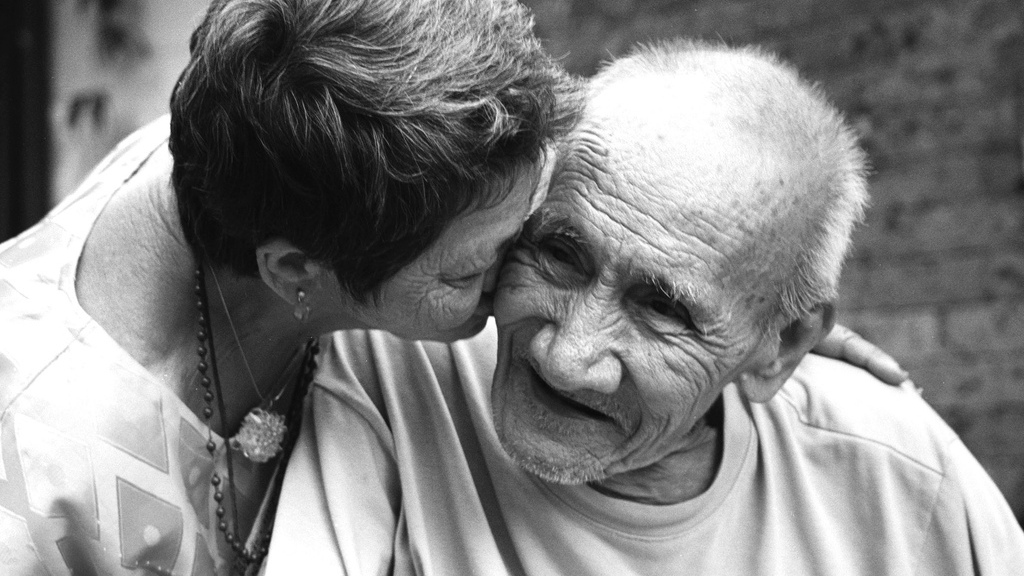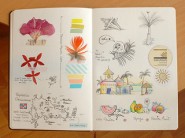Clothing and textile activist speaks at Elon
The talk was held February 20, in Koury Business School’s LaRose Theatre to share Frau Fiber’s story of getting people more involved in the clothes they wear.
ELON – The publicist, collaborator and archivist of Frau Fiber, Carole Frances Lung, an associate professor of fashion fiber and materials at California State University Los Angeles, spoke to share her alter ego’s message about textile manufacturing as it relates to our consumption of clothing. Lung and Fiber’s goal is to get people spending their free time altering or mending clothes rather than spending it on unhealthy activities like Facebook or television.
Frau Fib er’s persona is an immigrant from East Germany who was laid off from her job at a textile mill when the Berlin Wall came down in 1989. Fiber is meant to embody the, “Lost Generation of workers, who failed to assimilate to the new united Germany and never had the economic success of the communist times.” Fiber presents herself as a stoic, cold German personality with the pure goals of fighting oppression and satisfaction through creation.
er’s persona is an immigrant from East Germany who was laid off from her job at a textile mill when the Berlin Wall came down in 1989. Fiber is meant to embody the, “Lost Generation of workers, who failed to assimilate to the new united Germany and never had the economic success of the communist times.” Fiber presents herself as a stoic, cold German personality with the pure goals of fighting oppression and satisfaction through creation.
Fiber uses public appearances, service projects, art exhibits and other forms of exposure to give the public a hands on experience with sewing and the understanding of what it takes to create a garment. By giving the public experience with creating garments, Fiber wants to teach people the difference between poor and well crafted clothes. Through this understanding people can make better choices about what clothes are eco-friendly and long-lasting. Just one of several points from her activism focuses on the environmental problems from throwing out unimaginable amounts of clothing each year.
Another area of her activism focuses on trying to get people shopping in store that are free of products produced in overseas sweatshops. One project she underwent tasked her with creating an activity for children where she worked with around 150 kids each day. The idea was to teach children about sweatshops in other countries. Sections of the group were divided into different countries and paid an equivalent amount to children textile workers from that country. Fiber gave each country tasks and even created time cards. At the end of 45 minutes of work, some participants made less than 10 cents.
Most of Fiber’s public events are hands on and try to entice the public into interaction. Her demeanor is silent. Unlike other street personalities, she does not demand the public’s attention, but rather tries to peak their interest to produce more genuine interaction.
Often time participants have little to no experience sewing. Because the goal of many projects is the unity of a group in producing one overall product, these varying skill levels play into the overall quality of the finished product. Many times the products lack cohesion. In one project, Fiber created a ‘community quilt.’ Many people in different communities were invited to produce parts for the quilt and numerous hands went into its production. The differing skill levels are apparent as every piece is stitched with the respective style of each participant.
Frau Fiber has an extensive list of projects, with more on the way. Learn more about her movement at her website: http://carolefranceslung.org/
Fiber wants people to think more about their consumption and make more informed purchases. Her motto in this area is “shop to last, not fast.” She says there are many companies that make good quality, eco-friendly, sweatshop free products. Learning to distinguish the difference between high quality and disposable clothing needs to be ingrained into our lifestyles. Knowing that our clothing is made ethically should not be an afterthought.
In the face of of a culture set in its ways, Lung says of Fiber, “Frau, though her work is futile, she perseveres.”







